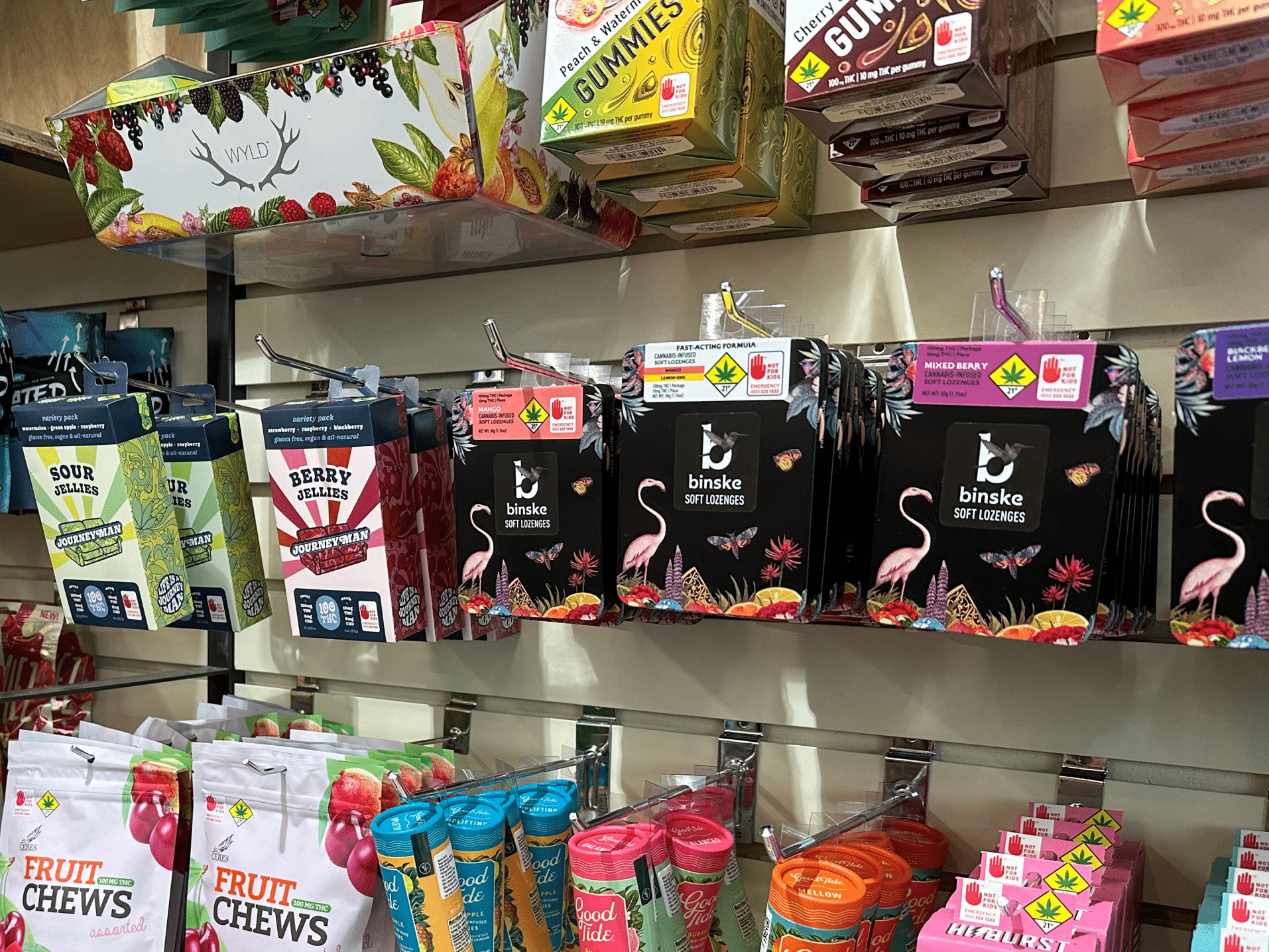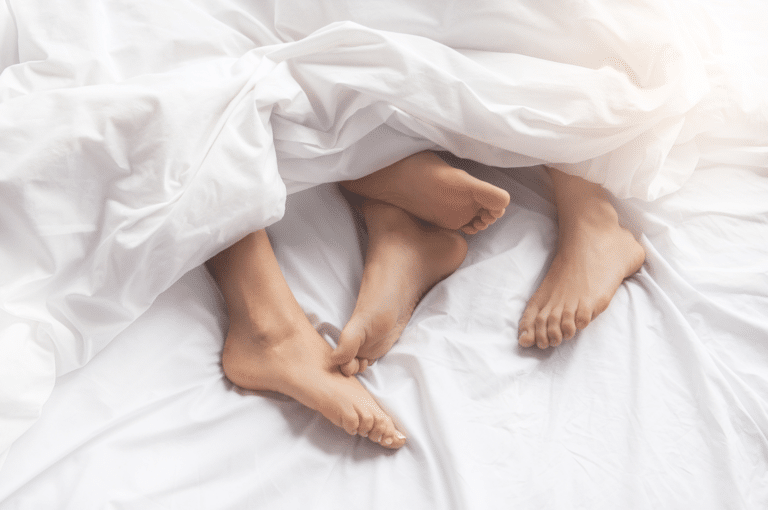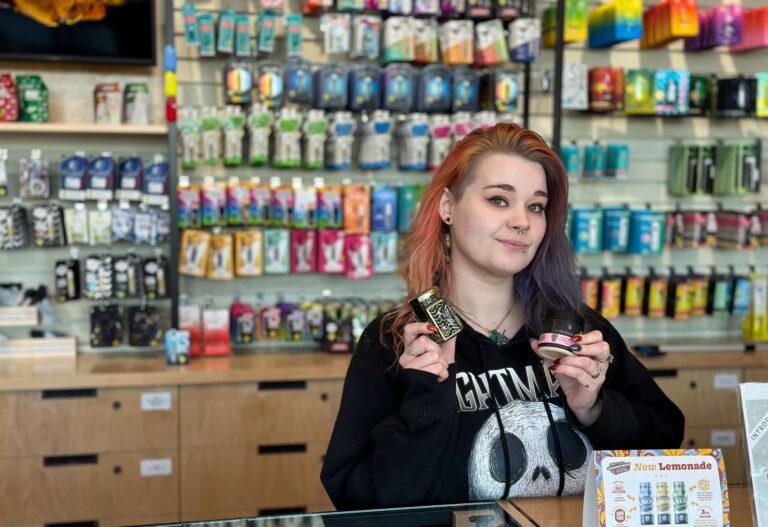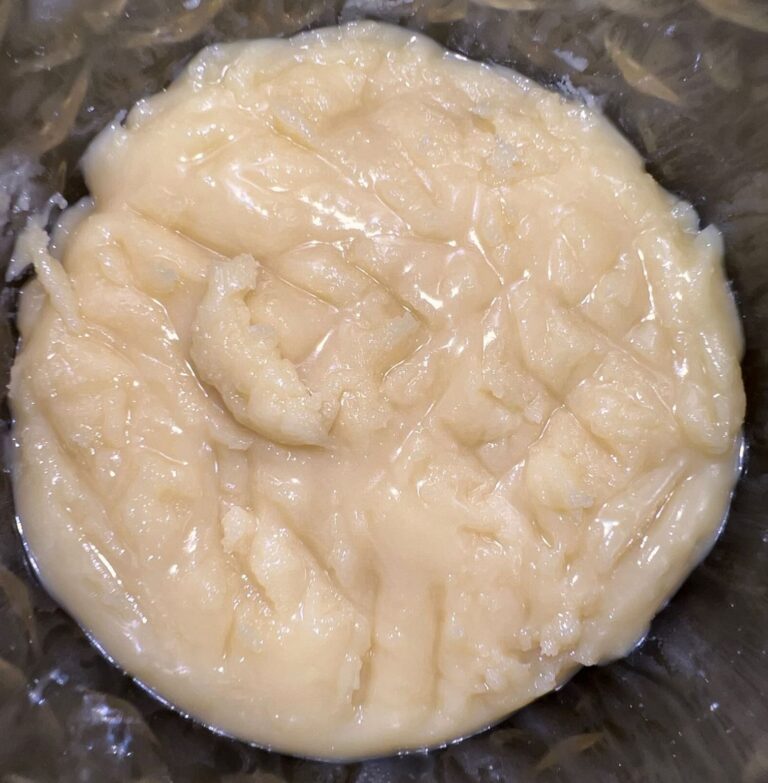
Posted on December 20th, 2023 to Products
It’s been 10 years since Washington state legalized the sales of cannabis, and though we’ve seen an astounding amount of innovations and new product categories in that time period, smoking still remains the most popular means of consuming cannabis, with flower and preroll sales accounting for 56% of the market. However, the experience of smoking isn’t ideal for everyone, as many people understandably don’t enjoy the sensation of inhaling smoke, or coughing, or even the intense fragrance of burning weed. Furthermore, some users may have health issues that prevent them from smoking even if they wanted to, so they have to utilize other options for relief. All this is to say that the concept of edibles—cannabis infused snacks and beverages—are a very attractive option for people who are uncomfortable with inhalation methods of consumption. As of this writing, edibles and infused beverages account for just over 10% of the market share in Washington’s cannabis economy. There are many considerations to bear in mind when consuming cannabis products, and edibles are no exception, so let’s discuss some ways to ensure that your edibles experience will be a positive one.
Understanding Cannabis Edibles
As you’re probably well aware, edibles are a form of cannabis products that are consumed orally as you would any other type of food or beverage. If you’ve ever wondered why eating raw cannabis flower isn’t popular, it’s not just because the texture is awful and the flavor is sorta gross, but because that’s not actually intoxicating; in order to achieve the desired effect, the THCA (tetrahydrocannabinol acid) in cannabis flower must be heated in order to be converted to the high-inducing [Δ9-]THC that we all know and love. Back in the day, the traditional way to decarboxylate (activate) cannabis for edibles was to add raw cannabis flower to butter or oil and heat it at a low temperature, but these days it’s far more common for cannabis producers to use distillate instead because a) it’s already fully activated by nature, b) it has little to no cannabis flavor, and c) because it’s dairy free.
Once eaten or drank, Δ9-THC breaks down in the gastrointestinal system, gets absorbed through the bloodstream, and is converted into 11-OH-THC by the liver in a process known as first-pass metabolism before it finally crosses the blood-brain barrier. 11-OH-THC is more potent than Δ9-THC and appears in the blood in higher quantities than inhaled Δ9-THC, so edibles are actually stronger than smoked cannabis. Always keep this in mind before consuming edibles because it’s easy to overdo them. If we make an alcohol analogy, smoking weed is akin to sipping beer, dabbing concentrates is similar to taking a shot of liquor, and eating edibles would be somewhere in between, like drinking a cocktail or eating a Jell-o shot.
When it comes to homemade edibles, calculating the dosage can be tricky, especially when raw cannabis flower is used instead of distillate, but thankfully when you buy edibles at a dispensary the math has already been done for you. By state law, all cannabis edibles are packaged as 10mg servings (some companies do 5mg or 2.5mg servings) with a maximum or 100mg of THC per container, thereby managing consumer expectations by keeping dosages consistent. In most cases, it’s best for a novice user to start with a 10mg dose then use that experience to gauge if they want to ingest more or less THC next time.
Choosing the Right Edibles
While cannabis brownies, cookies, and Rice Krispies treats were ubiquitous in the traditional market, these days you hardly see them on shelves at Washington dispensaries, and this is due in part to the fact that those forms of edibles contain dairy and aren’t as shelf stable as other options (also because it’s actually illegal for licensed cannabis producers to infuse dairy products in Washington). Today the most popular edible options you’ll see are:
- gummies,
- lozenges (hard candies),
- chocolates,
- pastilles (mints), and
- beverages.
If you’re really lucky, you might encounter cannabis infused sorbets.
When selecting edibles, the most important consideration is which form sounds the most appealing to you, then the next most important criteria should be the ingredients used. If you have any dietary restrictions, ask your budtender which edibles are vegan, gluten free, or sugar free (though I’ll tell you right now that sugar free edibles are still very difficult to come by, but RSO is always an option).
The next criteria to consider is fat content. This may be good or bad news to you depending on your lifestyle, but THC and other cannabis compounds are lipophilic, meaning that they need fats to dissolve and become bioavailable. If the edible you’re going to consume is fatty in nature—especially if it was produced with coconut oil or butter—then the effect will be more potent than ingesting an edible that’s lower in fat. Even if you choose some form of a low-fat edible, the THC will still bond to any fat that you’ve consumed that day, so live a little and eat something fatty before you take an edible.
Following the form, flavor, ingredients, and fat content, the last but certainly not least important consideration when selecting an edible is the ratio of CBD to THC. Based on clinical research by Dr. Ethan Russo, the cannabis industry uses ratios based on his findings that a 1:1 proportion of CBD to THC is ideal for treating the widest array of symptoms, so you could consider taking something with a 2:1 or 5:1 ratio if you’re worried about getting too high. If you’re not interested in getting stoned, try an edible or capsule with a 10:1 or 20:1 ratio instead.
There is a common misconception that CBD counteracts the high from THC, but that’s not exactly how it works; Honestly there seems to be conflicting research as of late, but the general consensus is that CBD lessens the intensity of the THC high. To put that another way, CBD may be useful for curbing potential paranoia.
Consuming Cannabis Edibles Safely
If you only absorb one thing from this comprehensive guide to edibles, let it be this: “start low, and go slow.” Heeding this advice will save you from having an intense, uncomfortable edibles experience. If you’re brand new to using edibles, or especially if it’s your first time, start with a low dose (10mg or less) and wait up to 2 hours to feel its effects. Every person metabolizes edibles differently, so you may feel the effects of an edible within an hour, or it could take longer. If you’re looking for instant gratification, know that the effects from a cannabis infused beverage can be felt much sooner, typically within 30 minutes due to its high bioavailability.
Consider the onset and duration of edibles when you’re planning your day, and do not consume more than your maximum dose within the first 2 hours otherwise your experience can become unpredictable very quickly. Keep in mind that the peak effects from an edible can occur 2 to 4 hours after ingestion, so don’t consume edibles unless you have time to chill out for several hours.
Enhancing Your Experience
While it is safe to consume edibles with a full or an empty stomach, the effects will be quicker and more intense if you consume them on an empty stomach, so we recommend that novice users eat a little bit of food before trying edibles for their first time. If you’re already a seasoned veteran when it comes to edibles, you may be able to handle them on an empty stomach, and that just might be what you need to get yourself to the next level.
When it comes to pairing edibles with complementary activities, do anything that relaxes you: go for a walk, watch a movie, read a book, consider creative endeavors like drawing or sculpting or writing, or try meditation or yoga. If you feel so inclined, you could enjoy an edible before doing some household chores.
When it was still illegal, it was common and even somewhat acceptable for cannabis users to watch TV or play video games when they’re stoned, but in trying to combat the stigma of laziness, the pendulum of cannabis marketing has swung too far in the opposite direction, leading some folks to think that cannabis use is only acceptable if they’re exercising, hiking, kayaking, jogging, snowboarding, skateboarding, base jumping, or biking. It’s healthy to incorporate cannabis into your active lifestyle, just bear in mind that the effect from edibles is more potent than inhalation, and that it’s perfectly valid to relax and ‘do nothing’ every once in a while. Also consider that THC gets stored in fat, so exercising will actually increase your high.
Some of the activities that normally relax you might not hit the same while you’re under the influence of edibles, and that’s OK. If at any point you feel uncomfortable, know that the sensation is temporary and go do something else, even if that just means laying down for a while.
Whatever you do, don’t drive! Get a ride if you need to go somewhere, otherwise just stay home and relax.
Managing and Mitigating Side Effects
Before we talk about side effects, it’s important to mention that edibles should not be consumed with alcohol. Among other effects, alcohol dilates blood vessels thereby increasing the absorption of THC, and potentially leading to nausea, dizziness, and other adverse effects.
Potential side effects of edibles include anxiety, paranoia, and dry mouth. In order to prevent anxiety & paranoia, please consume edibles somewhere you feel safe and familiar, like your own home or the home of a trusted friend. Sometimes when a novice user eats too much THC they will feel their heart racing and become paranoid that they’re dying; if this happens to you, remember that weed alone is not going to kill you, and that an ambulance bill for a green out is not worth the money or humiliation. Don’t be that person; if you get too paranoid, try dimming the lights and distracting yourself with a movie you’ve seen before, ideally comedy or animation, or put on some calming music. You can also try sniffing black pepper, as the caryophyllene may help to assuage anxiety, or drinking lemonade to help lessen the intensity.
As for the dry mouth, that’s pretty easy to remedy, just make sure you have plenty of water on hand. Juice and soda are also great for maintaining your comfort, but nothing will satisfy your cotton mouth like ice water or sparkling water.
Conclusion
To sum everything up, edibles are a popular and endlessly diverse means of enjoying cannabis but require several considerations including (but not limited to) the form, ingredients, fat content, and CBD to THC ratio. Always remember that THC from edibles becomes more potent than inhaled THC once it’s ingested, and the best advice for avoiding a bad edibles experience is to “start low, and go slow.”
Don’t exceed 10mg of THC until you’re sure how edibles will affect you, plan the rest of your day accordingly (do something that relaxes you), and never operate a vehicle under the influence. Eat something fatty before you ingest edibles, avoid mixing cannabis with alcohol, and keep lots of water on hand for potential drymouth. If you end up feeling paranoid, relax in the dark or put on a movie instead of calling 911, then just ride the wave, and make sure you take a lower dose next time.
Despite potential side effects, edibles can be a very soothing way to use cannabis as long as you enjoy them safely and wisely. If you have any specific questions about edibles, stop by 210 Cannabis Co and ask one of our friendly and knowledgeable budtenders.
About the Author
Ramsey Doudar has continuously worked in Washington’s cannabis industry for over 10 years, holding various positions that ranged from marketing strategist to inventory manager. He serves as the Marketing & Communications Coordinator for 210 Cannabis Co, and is also the founding member of a cannabis consumer advocacy group.
© 2024 210 Cannabis Co. All rights reserved.
Site by CannaPlanners



